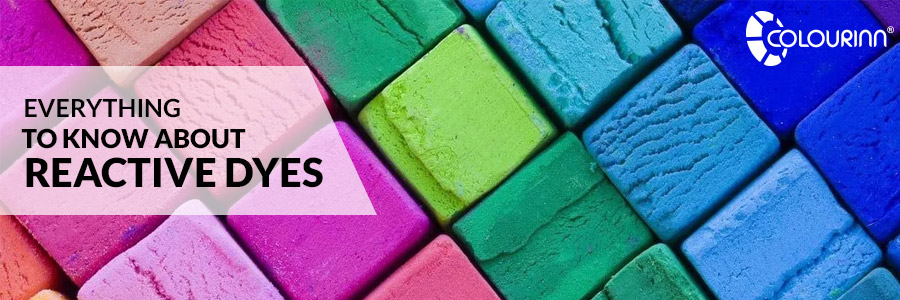The reactive dyes react chemically with the fabric to form a covalent bond and firmly bond with it. These dyes are commonly used in the textile industry on various fabrics, including cotton and wool. The dyes are not applied directly but in a solution with a high pH. In cases where the solution does not have the required pH value, it is alkalized in the later processes. Reactive dyes manufacturers initially started using the dyes for cellulose fibers. However, the scope of application gradually changed, and the reactive dyes were applied to other fabric types.
Properties of Reactive Dyes
- Reactive dyes come in many shades.
- Reactive dyes can be used in powder, paste, and liquid forms.
- They are water-soluble.
- Reactive dyes impart good wash fastness to the fabric owing to the strong covalent bond.
- Reactive dyes can be used at low temperatures and consume less time for dyeing.
Types
Reactive dyes can be broadly differentiated into three different types based on the following factors:
1. Reactive Group
The reactive group influences the covalent bond between the fabric and the dye. Therefore, we can classify reactive dye into Halogen and Activated vinyl compounds.
2. Reactivity
The reactive dyes react differently with fabric which allows us to categorize them into lower, medium, and higher reactive dyes.
3. Dyeing temperature
To yield the best results, different reactive dyes need different temperatures. You can find cold-brand reactive dyes and medium-brand reactive dyes. Then there are the third type, known as hot brand reactive dyes, that require a higher temperature.
Factors Influencing Dyes Selection
One reactive dye cannot be suitable for every fabric. Many factors influence the dyes selection process. These factors are:
- Dyeing method
There is a batch-wise dyeing method, a semi-continuous method, and a continuous method. Again, the selection of the dyeing method depends on the affinity and reactivity between the dye and fabric.
- Brand selection
We have three different brands: hot, medium, and cold.
- Availability of dyes
- Fastness of dyes
- Storage facility
Dyeing Mechanism
The dyeing mechanism can be divided into three main stages:
1. Dye absorption, where the electrolyte is added to the dye solution to initiate the exhaustion of dye when the fabric is immersed in it. This increases the dye absorption in the fabric.
2. Fixation to create a strong bond between the dye and fabric by maintaining appropriate pH using an alkali.
3. Washing off to remove extra dye from the fabric
Conclusion
Reactive dyes are widely used across the textile industry. To get the best results, one must use the best quality dyes. You can obtain quality dyes from us. We are one of the leading reactive dye manufacturers. We have created a unique brand name as dyes manufacturers in India and Bangladesh. We can provide bulk quantities for a limited time. Contact us today to get great reactive dyes at affordable rates.
Frequently Asked Questions
Q.1: Is reactive dye water soluble?
Ans: Reactive dyes, with sodium salt of sulphonic acid groups, are soluble in water and consist of chlorotriazine (Figure 4.4) or vinyl sulphone reactive groups.
Q.2: What are some examples of reactive dyes?
Ans: The first examples of reactive dyes utilized monoazo systems for bright yellow and red shades. Coupling aniline to H-acid gave the azo dye used in the first Procion Red (C.I. Reactive Red 1), and anthraquinone dyes were used to obtain bright blue shades.
Q.3: Are reactive dyes eco-friendly?
Ans: In summary, fibre reactive dyes such as our Dylon fabric dyes do not contribute to environmental pollution, and don’t require huge amounts of land to produce. Making them a great choice for those that want to balance vivid, long-lasting colours with the minimum of environmental impact.

